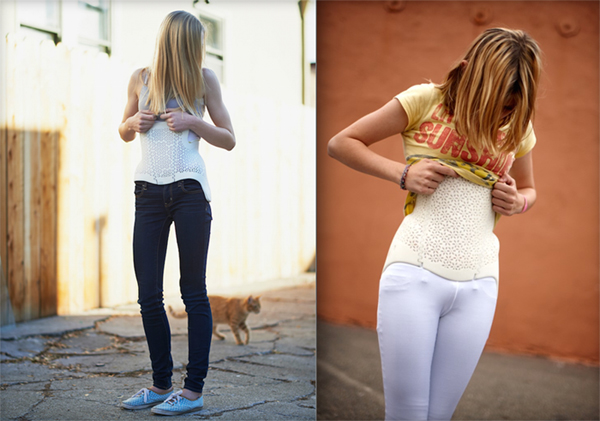3D Systems Offers New Option for Scoliosis with Bespoke Braces

Bespoke Braces are tailored to each patient and can be worn under normal clothing. Courtesy of 3DS.
Latest News
June 10, 2014
If you are looking for tangible evidence that additive manufacturing (AM) has something to offer the world beyond prototypes, you needn’t look further than the growing number of medical applications for the technology. Patients around the world have benefited from AM and new innovations are appearing every day.
3D Systems entered the medical 3D printing arena with its acquisition of Bespoke Innovations in 2012. Prior to the acquisition, Bespoke Innovations provided stylish outer coverings, called Fairings, for prosthetics. Now under the 3DS umbrella, Bespoke offers a new treatment option for scoliosis patients with the unveiling of its new Bespoke Braces.
 Bespoke Braces are tailored to each patient and can be worn under normal clothing. Courtesy of 3DS.
Bespoke Braces are tailored to each patient and can be worn under normal clothing. Courtesy of 3DS.For those unfamiliar with this particular medical condition, scoliosis is defined as a lateral or rotational curvature of the spine. Symptoms generally appear in children between the ages of eight to thirteen, and the vast majority of those diagnosed are female.
Braces that attempt to halt the continuing deformation of the spine are the usual treatment for scoliosis, but many doctors report the treatment is largely ineffective as a result of young patients’ unwillingness to wear the brace. The result is surgical correction, called “full spinal fusion,” in which metal rods are used to forcibly realign the spine.
In place of a bulky or ill-fitting mass-produced brace, Bespoke Braces are fit to each patient using a prototype “check-socket” brace, which is then digitized to create a digital reference underlay. The digital design is then further adjusted for each patient and manufactured using 3DS’ selective laser sintering AM process. The result is something 3DS and doctors hope young patients will find more comfortable and be more willing to wear.
“All of our children wanted the Bespoke Brace,” said Dr. James Policy, of Stanford University. “We had a small 3D printed scale model of the brace on my desk. Once the children saw this, they all wanted one. I’ve never seen children respond so positively to a brace. It was so cool that once they were fitted, many were showing the brace off to their friends.”
According to Dr. Policy, it will require some work to prove the benefits of the Bespoke Brace to insurers and the medical community. Early data (and the doctor’s own experiences) suggests that children seem more willing to wear this particular brace, which may well be the deciding factor.
Below you’ll find a video that describes the condition.
Source: 3DS
Subscribe to our FREE magazine, FREE email newsletters or both!
Latest News
About the Author
John NewmanJohn Newman is a Digital Engineering contributor who focuses on 3D printing. Contact him via [email protected] and read his posts on Rapid Ready Technology.
Follow DE





